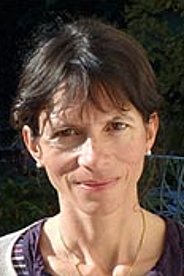Dr. Stéphanie Manel ¶

Ecole Pratique des Hautes Etudes
Fellowship Period: 2021
My research focuses on the study of mechanisms (adaptation, gene flow, ) that generate biodiversity and its spatial and temporal dynamics in response to environmental changes. I engage in projects in landscape genetics and genomics. I also develop original approaches combining artificial intelligence and environmental DNA to identify the determinants of the distribution of genetic diversity and to predict population responses to global change.
Activities within WSL Fellowship ¶
The huge potential of landscape genomics lies in studying the imprints of local adaptation of organisms along natural ecological gradients. In the context of rapid climate change, it is essential to better understand how to quantify environmental variables in the study of genotype–environment associations. However, even though large-scale genetic patterns have recently come to light, the genomics of adaption and its underlying environmental drivers deserve full consideration. During my stay at WSL, I have been engaged in a collaborative project on a invited review paper in “Trends in Ecology and Evolution” in landscape genomics with researchers of the Biodiversity Center at WSL (Benjamin Dauphin, Christian Rellstab, Rafael O. Wüest, Dirk N. Karger, Rolf Holderegger, Felix Gugerli). In this review, we discuss how to improve the explanatory power of landscape genomic analyses by matching genomic data to environmental data through the best analytical tools. This step is essential to increase the explanatory power of landscape genomics models for use in current and future environmental scenarios. I also did two talks in the Biodiversity seminar series :
- From landscape genetics to macroecology (2/062021);
- Genetic response of species to climate change (8/12/2021)
Cooperation within WSL ¶
Interne Kontakte (Datensätze) ¶
Cooperation outside of WSL ¶
Nadir Alvarez. University of Geneva (ANR shift EDNA)
